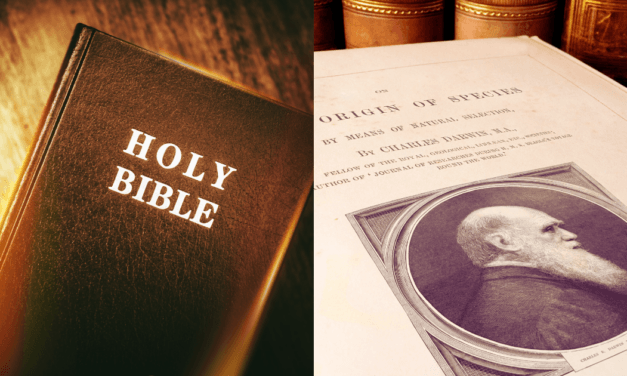This article first appeared in the Christian Research Journal, volume 45, number 1 (2022).
For further information or to support the Christian Research Journal please click here.
When you support the Journal, you join the team and help provide the resources at equip.org that minister to people worldwide. These resources include our ever-growing database of over 2,000 articles, as well as our free Postmodern Realities podcast.
Another way you can support our online articles is by leaving us a tip. A tip is just a small amount, like $3, $5, or $10, which is the cost of a latte, lunch out, or coffee drink. To leave a tip, click here
While discussing how those who are born intersex should address their sexuality, I said to a friend, “This is a tough issue. It’s hard enough just being normal.” He replied, “But what is normal?” Indeed, what is normal — in the sense of normative — for human sexuality? What is morally right for men as men and for women as women with respect to gender and sexual identity and behavior?
According to critical race theory (CRT), “sexual minorities” (or LGBTQ+ people) are among those oppressed by the cis-gender, heterosexual, white culture.1 The leading activist organization for CRT ideas is Black Lives Matter, which also affirms LGBTQ+ lifestyles,2 as stated on their web page: “Black liberation movements in this country have created room, space, and leadership mostly for Black heterosexual, cisgender men — leaving women, queer and transgender people, and others either out of the movement or in the background….As a network, we have always recognized the need to center the leadership of women and queer and trans people.”3
A key idea is “gender fluidity,” the rejection of fixed and God-given categories of gender identity, decoupling gender from biological sex. Supposedly, sex is “assigned” at birth based on sexual organs and chromosomes but need not define one’s gender identity. Thus, a biological male could identify as female with respect to gender. In fact, the Healthline web page features an article called, “68 Terms That Describe Gender Identity and Expression.”4 Moreover, with respect to sexual identity, one can identify as heterosexual, gay, bisexual, and so on, with or without fluidity in sexual preferences. Without looking at the full array of gender and sexual possibilities advocated today (which can be mind-bending), I will address the principal reason why people are abandoning biblical norms of sexuality, consider the biblical basis for sexuality, and address the phenomenon of intersex.
Sex, Biology, and God
Francis Schaeffer (1912–84) discerned the landscape on sexual identity in 1968, just when the sexual revolution was gaining ground and gutting decency. He specifically addressed homosexuality, but his analysis applies to the entire array of today’s gender and sexual identities and behaviors.
Some forms of homosexuality today…are not just homosexuality but a philosophic expression. One must have understanding for the real homophile’s problem. But much modern homosexuality is an expression of the current denial of antithesis. It has led in this case to an obliteration of the distinction between man and woman. So the male and the female as complementary partners are finished….In much of modern thinking all antithesis and all the order of God’s creation is to be fought against — including the male — female distinctions.5
By “antithesis,” Schaeffer means the either/or — that is, the binary of real options. He defines it as “direct opposition of contrast between two things. (As in ‘joy’ which is the antithesis of ‘sorrow.’)”6 All of this, Schaeffer goes on to explain, results from “the death of absolutes”7 — the denial of objective, universal, and categorical truths in morality, logic, and metaphysics. “You shall not commit adultery” (Exod. 20:14)8 is a moral absolute. The multiplication table contains nothing but absolutes, as well.
If one denies a Creator as the moral governor of the universe, all antithesis and all absolutes die away. No one has stated that more plainly than atheist–lesbian social critic Camille Paglia: “Fate, not God, has given us this flesh. We have absolute claim to our bodies and may do with them as we see fit.”9 But since there is a God who has both created us and spoken to us, we should heed His words, which have a binding address on our sexuality.
The Bible on Sexuality
The biblical position on sexuality is rooted in Genesis 1–3, where we find the foundational principles for relationships. God’s design for human sexuality is heterosexual monogamy. Both the man and woman are created in God’s image and likeness, and in marriage the two become one flesh, which is the basis for bringing children into the world (Gen. 1–2). Human beings were created for relationships. Their natures thrive in some relationships but not in others. Some relationships please God, but others do not. For the Bible, the essence and definition of marriage is heterosexual monogamy, and marriage is the sole relationship for sexual intimacy.
Through the Fall, humans became alienated from God, from themselves, from each other, and from nature (Gen. 3). It is because of the Fall that any form of illicit sexuality exists; it has no root in creation or in human flourishing (see Lev. 18 for a catalog of sexual sins). Paul teaches that homosexual activity is the result of sin and rebellion against God (Rom. 1:18–32) and warns that those who persist in such activity will not inherit the Kingdom of God (1 Cor. 6:9–11). The categories are unambiguous and transparent. Daniel R. Heimbach exhaustively details sexual activities restricted in the Bible:
- No sex outside marriage (Exod. 20:14; Matt. 19:17–18; 1 Cor. 7:1–9; 1 Thessalonians 4:3–5; Heb. 13:4)
- No sexual worship (spiritualized prostitution) (1 Cor. 6:15–17; Deut. 23:17)
- No sexual commerce (economic prostitution) (Lev. 19:29; Deut. 23:18; Prov. 6:25–26; 1 Cor. 6:15–20)
- No homosexual sex (Lev. 18:22; 20:13; Gen. 19; Judg. 19; Rom. 1:26–27; 1 Cor. 6:9; 1 Tim. 1:9–10)
- No sex with animals (bestiality) (Lev. 18:23; Deut. 27:21; Exod. 22:19)
- No sex or marriage with close relatives (incest) (Lev. 18:6; 1 Cor. 5:1–2)
- No pedophilia (See #1, 4, and 6; Matt. 18:5–6)
- No sexual violence (Gen. 2:24; Deut. 22:25; Ezek. 45:9; 1 Cor. 13:4–5; Eph. 5:25; Phil. 2:3; 1 Thess. 4:3–7)
- No lustful desires (inner adultery) (Exod. 20:17; Deut. 5:21; Prov. 6:25; Matt. 5:28)
- No intentional gender confusion (Deut. 22:5)
- No sex during menstruation (Lev. 15:19–24; 18:19; 20:18; Ezek. 18:5–9; 22:8–12; cf. 1 Cor. 7:1–5)
- Strong opposition to divorce (Mal. 2:14–16; 1 Cor. 7:10; Mark 10:11; Matt. 5:32)
- Strong opposition to spiritually mixed marriages (Exod. 34:15–16; Ezra 9:12; 2 Cor. 6:14–18)
- Strong opposition to indecent exposure (immodesty) (Zeph. 3:5; Phil. 3:19; Rom. 14:21; Isa. 47:3; 1 Tim. 2:9–10; 1 Pet. 3:2–4)
- Opposition to polygamy (Deut. 17:17; Titus 1:5–6; 1 Tim. 5:9; 1 Kings 11:3–4)
- Opposition to fellowship with sexually immoral Christians (1 Cor. 5:9–13)10
C. S. Lewis captured the issue in Mere Christianity: “There is no getting away from it; the old Christian rule is, ‘Either marriage, with complete faithfulness to your partner, or else total abstinence.’ Now this is so difficult and so contrary to our instincts, that obviously either Christianity is wrong or our sexual instinct, as it now is, has gone wrong. One or the other. Of course, being a Christian, I think it is the instinct which has gone wrong.”11 Truly, the sexual path for the Christian is narrow, but it is good.
Many attempt to justify sexual intimacy outside of traditional morality by claiming that “love is love.” If this is more than a tautology, it means that certain feelings between two (or more) people justify erotic involvements, even same-sex marriage. Love, however, needs guardrails and boundaries since any strong emotions can go wrong and have disastrous consequences. From a biblical viewpoint, “Love does not delight in evil but rejoices with the truth” (1 Cor. 13:6). If truth about human nature and the Fall does not guide and discipline our affections, then love goes astray.
What about Intersex?
In The Meaning of Marriage, Kathy Keller asserts that everyone is either genetically male or female: one either has XX chromosomes or XY chromosomes.12 However, it is more complicated, given abnormalities resulting in a condition called intersex. Previously, this was known as hermaphrodism, although that term means half man and half woman, which is generally inaccurate. Perhaps two percent of the population is intersex in one way or another. In a popular TED talk, Emily Quinn, an intersex activist, explains her condition as being genetically male but with a difference. She has internal testes and a vagina. Her body does not respond to testosterone. This is one variation of intersex among several possibilities. She is married, although she cannot have children because she does not have a uterus. Her takeaway message was that gender is not either/or — that is, a binary. She claims that we put categories on people. Gender is a spectrum, and no one should feel ashamed for their gender identity.13 What should we think of this approach?
First, the biological and genetic realities of humans are more complicated than many think. There are indeed more chromosomal possibilities than XX and XY.14 Like Quinn, one can be genetically male but appear female and feel female, given other factors. (She has had no surgeries to alter her body, although many intersex people have.)
Second, we should be compassionate toward those who are intersex, given the physical difficulties, psychological conundrums, and shame and self-hate they may face. Competent counselors and physicians involved with intersex people should search for the right answers medically and psychologically to these matters of complicated identity. I applaud Quinn for speaking out about her condition in service of other intersex people, although I cannot accept her philosophy of gender, which I now take up.
Third, a Christian must deny that there is no gender binary and that gender is only a social or personal construction. In her talk, Quinn said, “Does it really make much difference what is between your legs?” Yes, it does, since the vast majority of humans are not intersex (and because sexuality is more than what is between your legs). Intersex is an abnormality, not a place on a gender spectrum. The word abnormal has no moral connotation here; it means a deviation from a created norm, something that came about because of the Fall.15 Intersex human beings are made in the image of God. The Fall has affected them differently than others, but we all experience the groaning of a fallen creation (Rom. 8:18–26).
Jesus spoke of eunuchs “who were born that way,” thus indicating some gender abnormality, at least in men (Matt. 19:12). This seems to be the only biblical allusion to intersex. The spirit of this passage indicates that eunuchs (either by birth, by castration, or by celibacy) can live well, nonetheless. Paul says that those who don’t marry can find meaning by following Christ (1 Cor. 7:25–35).
Some think that intersex undermines a biblical ethic of sexuality since it splits “the binary” of male and female and opens up many other possibilities. The biological fact of intersex does not challenge essential biblical moral teaching n sexual ethics, although it complicates gender and sexual identity for those affected. Moral values are based on the unchanging character of God (Exod. 20:1–18; Mal. 3:6; James 1:17) and on the heterosexual and monogamous norms God established at creation. That two percent of the population are intersex has no effect on the sexual norms that pertain to those who are unambiguously male or female. We should, however, open our hearts to intersex people when they come to us for advice and support. Those who are intersex should look to a good God for love and direction.
God and Sexual Identity
Once the created categories of male and female have been abandoned, along with the idea of the Fall, then anything goes concerning sexual identity and sexual activity (as long as the sex acts are consensual, says the current cultural narrative). The sky is the limit when the heavens are emptied of God. And Earth becomes a new kind of inclusive and diverse madhouse. The Wisdom of God speaks this: “For those who find me find life and receive favor from the LORD. But those who fail to find me harm themselves; all who hate me love death” (Prov. 8:35–36).
Let us turn to God and offer our bodies and our souls to Him (Rom. 12:1–2).
Douglas Groothuis was at the time of this writing in 2022 Professor of Philosophy at Denver Seminary. He is now Distinguished University Research Professor of Apologetics and Christian Worldview at Cornerstone University. Among his many books are Christian Apologetics: A Comprehensive Case for Biblical Faith, 2nd ed. (IVP Academic, 2022) and Fire in the Streets: How You Can Confidently Respond to Incendiary Cultural Topics (Salem Books, 2022).
NOTES
- On CRT, see Douglas Groothuis, Fire in the Streets (Washington, DC: Salem Books, 2022).
- Sony Salzman, “From the Start, Black Lives Matter Has Been about LGBTQ Lives,” ABC News, June 21, 2020, https://abcnews.go.com/US/start-black-lives-matter-lgbtqlives?id=71320450.
- “Herstory,” Black Lives Matter, https://blacklivesmatter.com/herstory/.
- Mere Abrams and Sian Ferguson, “68 Terms That Describe Gender Identity and Expression,” Healthline, February 9, 2022, https://www.healthline.com/health/differentgenders.
- Francis A. Schaeffer, The God Who Is There (1968; Downers Grove, IL: InterVarsity Press, 2020), 53, Kindle Edition.
- Schaeffer, The God Who Is There, 217.
- Schaeffer, The God Who Is There, 53.
- My quotations of the Bible are taken from the NIV.
- Camille Paglia, “Rebel Love: Homosexuality,” Vamps and Tramps (New York: Vintage Books, 1994), 71; quoted in Nancy Pearcey, Love Thy Body (Grand Rapids, MI: Baker Publishing Group, 2018), 166, Kindle Edition.
- Adapted from Daniel R. Heimbach, True Sexual Morality: Recovering Biblical Standards for a Culture in Crisis (Wheaton, IL: Crossway, 2004), 154.
- C. S. Lewis, Mere Christianity (1943; New York: HarperCollins, 2009), 41, Kindle Edition.
- Timothy Keller and Kathy Keller, The Meaning of Marriage (New York: Penguin, 2013), 194.
- Emily Quinn, TEDWoman, November 2018, https://www.ted.com/talks/emily_quinn_the_way_we_think_about_biological_sex_is_wrong?language=en.
- See Pearcey, Love Thy Body, 221.
- On humanity as “abnormal” because of the Fall, see Francis Schaeffer, “The Moral Necessity,” in He Is There and He Is Not Silent, rev. and updated (1972; Carol Stream, IL: Tyndale, 2001).










